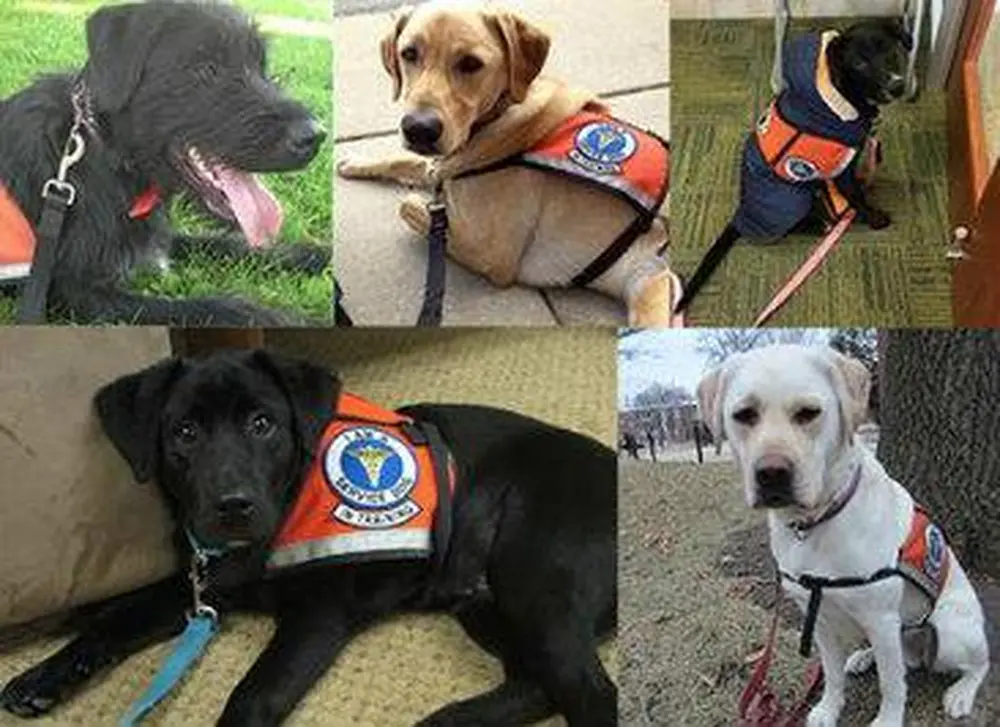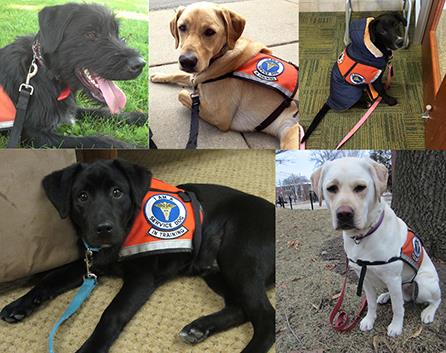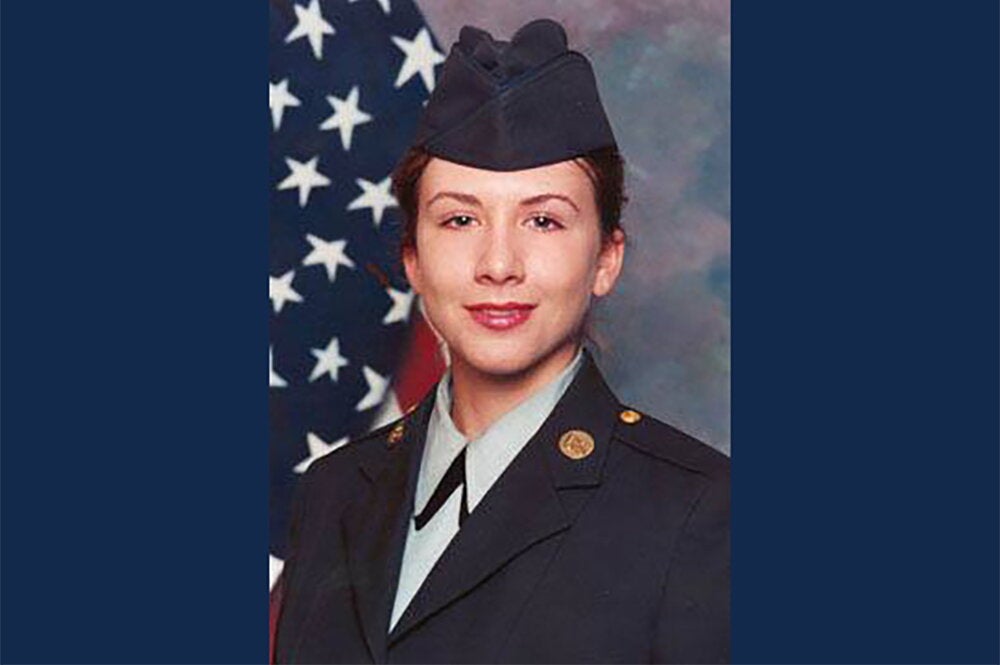

Teaching a dog to sit, stay and come is one thing, but the Illini Service Dogs team is training their dogs to do everything from opening doors and flipping lights to helping a fallen person to his feet. Although fairly new to the university, the Illini Service Dogs organization is now well known across campus for turning dogs into service companions for people with disabilities.
The all-volunteer organization was founded by Illinois alum Bridget Evans in 2010, and it has only grown since then. Bridget had been on a waiting list to get her own service dog for her entire life, so she decided to train her own service dog (Hero, a chocolate lab, accompanied Bridget at her commencement in 2013).
Recognizing that college students would make great dog trainers, Bridget started the Illini Service Dogs club. When she started the club four years ago, she had just a few other members. This past year on Quad Day, the club received over 800 signatures and emails.
The Illini Service Dogs team trains service dogs and offers them completely free of charge to people who need them. The organization relies solely on donations, and each dog costs the club anywhere from $5,000 to $10,000 to train frompuppyhood to placement as a service dog.
Every new student member in the organization starts on the fundraising team, where they learn the logistics of the organization. Some members are placed on teams to help train the dogs.
Each dog is raised by a team of individuals. The dog may live with one person, while the others help train the dog. This exposes the dog to a variety of people, and helps it adjust more easily to any person or situation it ends up in.
The organization receives their dogs from breeders and shelters. The current dog team consists of Grainger, Abe, Busey, Circee, and Huff. Grainger was named after the engineering library, Busey after the dorm, and Circee after the athletic facility that students and alums know as CRCE. Abe is named for the nation’s well known president, and Huff is named after Huff Hall.
Grainger is a yellow lab and almost two years old. Illini Service Dogs received him from Turning Point Labradors. Abe, a yellow lab who turns two this month, is the oldest of the dogs, and he came from Darty Labs. Busey is a schnauzer lab mix and 18 months old, and she is a rescue from the St. Louis Senior Dog project.
Likewise, Circee, a lab and border collie lab mix, is eight months old and also came from St. Louis Senior Dog Project. The organization’s newest addition is Huff, a four month-old lab mix that was abandoned along the side of the road. The organization received him as a rescue during this past winter break from Great Lakes Lab Rescue.
The dogs learn more advanced skills the longer they are with the organization. So while Grainger and Abe are going to class with their trainers, Circee and Huff are learning the basics.
“The sit, stay, and come,” Kelley Sarussi, a junior in economics, describes training Circee. “And she’s learning to heel. So when walking, heel and leave it, to not look at squirrels, that sort of thing.”
After learning basic skills, Circee will begin to learn additional skills needed for a service dog. For example, she will learn to touch items with her nose, which leads up to pushing the button to opening doors. The more advanced dogs like Grainger know more difficult skills, and are brought around to public places.
Once the dogs are ready to be placed, they are paired up with people. Once a pairing is made, the dogs are taught some more specific skills depending that person’s needs.
Emmie Asrow, a pre-vet junior in molecular and cellular biology, has been in the club for three years and describes the advanced training the dogs receive.
“We train them to do things like open doors, turn lights on and off, pick things up, they can help people get through a crowd, and some of our dogs learn ‘brace’, which is if someone falls, they can help them get up,” she says. “Some of our dogs learn to help find help if something happens. It just depends on the dog and whom they’re being placed with.”
Upon the dog’s graduation, the dog parts with the club, and moves on with its new owner and fulfills his or her new role as a full-fledged service dog. Emmie reflects on how much she learned from being part of the club.
“I’ve learned a ton about how to train animals. Before I joined this club, I had no idea how to really take a dog from a puppy, which is a blank slate, and turn them into a service dog,” she says. “I’ve learned a lot about how to interact with animals, and how to get them to want to listen to you, and want to interact with you.”
Kelley describes the feeling of watching the dogs develop into a service companion.
“You see them when they’re a puppy and they can’t even sit, and they don’t want to listen to you,” Kelley says. “Then one day you see them as a service companion, she adds, “and that’s really cool, to see that.”
More information, see the organization’s blog at illiniservicedogs.com/. There are pages for each dog (including training summaries), contact information, and links for questions and how to make a donation.


